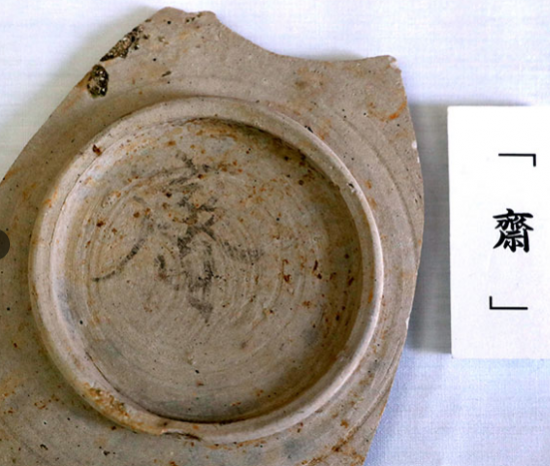Tomoyoshi Kubo
Source - http://www.asahi.com/ajw/articles/AJ201804150004.html
 Remains of a large building unearthed to the north of a previously found building are seen from its east side. (Provided by the Kyoto City Archaeological Research Institute)
Remains of a large building unearthed to the north of a previously found building are seen from its east side. (Provided by the Kyoto City Archaeological Research Institute)
Ruins of an imperial princess’ residence from the ninth century may have been unearthed on the former site of Heiankyo, Japan’s ancient capital.
The Kyoto City Archaeological Research Institute said a “kaiyu” glazed ceramic plate that has a kanji character reading “sai” written in ink was discovered near the remains of two large buildings.
An expert pointed out the possibility that the structures, dating from the first half of the ninth century during the early Heian Period (794-1185), were part of the home of Sai-o, a princess featured in the Aoi Festival, one of Kyoto’s three prominent festivals.
Sai-o initially referred to unmarried princesses who served Ise Jingu shrine in what is now Mie Prefecture on behalf of the emperor from the Asuka Period (592-710). Sai-o was also known as Sai-ku.
In the early Heian Period, Kamojinja shrine in present-day Kyoto began selecting its own Sai-o, who was called Sai-in. Sumptuous processions of Sai-in and her subordinates are depicted in “The Tale of Genji” and “Makura no Soshi” (The Pillow Book).
Shuji Yoshino, an associate professor of ancient history at Kyoto Sangyo University, said the residence could have belonged to one of the daughters of Emperor Saga, who reigned from 809 to 823.
Yoshino cited the possibility of Princess Uchiko, who was the first Sai-in of Kamojinja, or Princess Hitoko, who served as a Sai-ku of Ise Jingu.
According to the research institute, the remains of the two large buildings were unearthed on the grounds of Shimadzu Corp.’s Sanjo plant in Kyoto’s Nakagyo Ward. The ceramic plate reading “sai” was discovered in a hole in the eastern portion of the excavation site.
 Part of a ceramic plate bearing the kanji character “sai” (Yoshiko Sato)
Part of a ceramic plate bearing the kanji character “sai” (Yoshiko Sato)
One building, which measures 21 meters east to west and 9 meters north to south, was discovered in a survey that ended last summer. The second building, which stretches 14 meters east to west and 8.5 meters north to south, was found 12 meters north during the latest excavation.
The two structures likely constitute one of the largest residential facilities for high-ranking aristocrats in Heiankyo, which was commissioned by Emperor Kanmu, who reigned between 781 and 806.